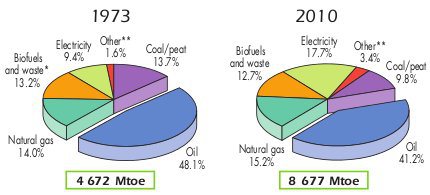
When comparing power sources, we have to take the costs of system effects into account.
By Martin Nicholson and Barry Brook. This article was first published on The Conversation. A response was then published on Business Spectator. It is worth reading both pieces, and the comments that followed them (for instance, Martin’s reply).
A recent Bloomberg press release got wide coverage with its claim that wind power is now cheaper than coal. But a new report from the OECD shows that when you cover the full cost to the grid, variable renewables like wind don’t add up as favourably.
It is often claimed that introducing variable renewable energy resources such as solar and wind into the electricity network comes with some extra cost penalties, due to “system effects”. These system effects include intermittent electricity access, network congestion, instability, environmental impacts, and security of supply.
Now a new report from the OECD titled System Effects of Low-Carbon Electricity Systems gives some hard dollar values for these additional imposts. The OECD work focuses on nuclear power, coal, gas, and renewables such as wind and solar. Their conclusion is that grid-level system costs can have significant impacts on the total cost of delivered electricity for some power-generation technologies.
All generation technologies cause system effects to some degree. They are all connected to the same transmission and distribution grid structure and deliver electricity into the same market. They also exert impacts on each other, on the total load available to satisfy demand, and the stability of the grid’s frequency control. These dependencies are heightened by the fact that only small amounts of cost-efficient electricity storage are available.
Any electricity generation technology can cause grid instability and price fluctuations if it goes offline unexpectedly. But a key finding of the OECD report is that renewables that are particularly variable, such as wind and solar, generate system effects that are at least an order of magnitude greater than for “dispatchable” technologies such as coal, gas, and nuclear.
These renewable sources require no fuel, and so have very low operating costs. This allows them to enter the market at low prices (or even negative prices if production subsidies or generation mandates are in place).
As a consequence, with the current power-generation mix in the OECD (including Australia), dispatchable technologies will suffer due to lower average electricity prices and reduced capacity factors when a significant quantity of low-cost renewable energy is available. (That is, dispatchable units will more often be forced to ramp down their output when there are high flows of low-cost renewable energy, yet will still need to be ready to ramp up again when the output from variable renewable generators is not sufficient to meet the total demand across the grid.)
The report defines grid-level system costs as the total costs (on top of plant-level costs) to supply electricity at a given load and given level of security of supply. These additional costs include the extra investment to extend and reinforce the grid, plus the costs for increased short-term balancing and for maintaining the long-term adequacy of electricity supply in the face of intermittent variable renewables.
Filed under: Nuclear, Policy, Renewables | 2 Comments »






.png)








